NRAO eNews
Volume 7, Issue 12
4 December 2014
NRAO eNews
Volume 7, Issue 12 • 4 December 2014

Major NRAO Events at the Seattle AAS Meeting
Next Generation Very Large Array Workshop
Sunday, 4 January 2015, 9am - 6pm PST
Washington State Convention Center, Room 616/617
Splinter Session: New Capabilities at the NRAO
Tuesday, 6 January 2015, 1:30 – 3:30 pm PST
Washington State Convention Center, Room 303
Tuesday, 6 January 2015, 6:30 - 8:30 pm PST
Washington State Convention Center, Room 6A
Thursday, 8 January 2015, 11:40 am - 12:30 pm PST
Washington State Convention Center, Room 6E
Other Upcoming Events

Revolution in Astronomy with ALMA - The Third Year
Dec 08 - 11, 2014 | Tokyo, Japan

AAAS 2015 Science Symposium
Feb 15, 2015 | San Jose, CA
IAU Members: Cast Your Vote for the Radio Astronomy Commission
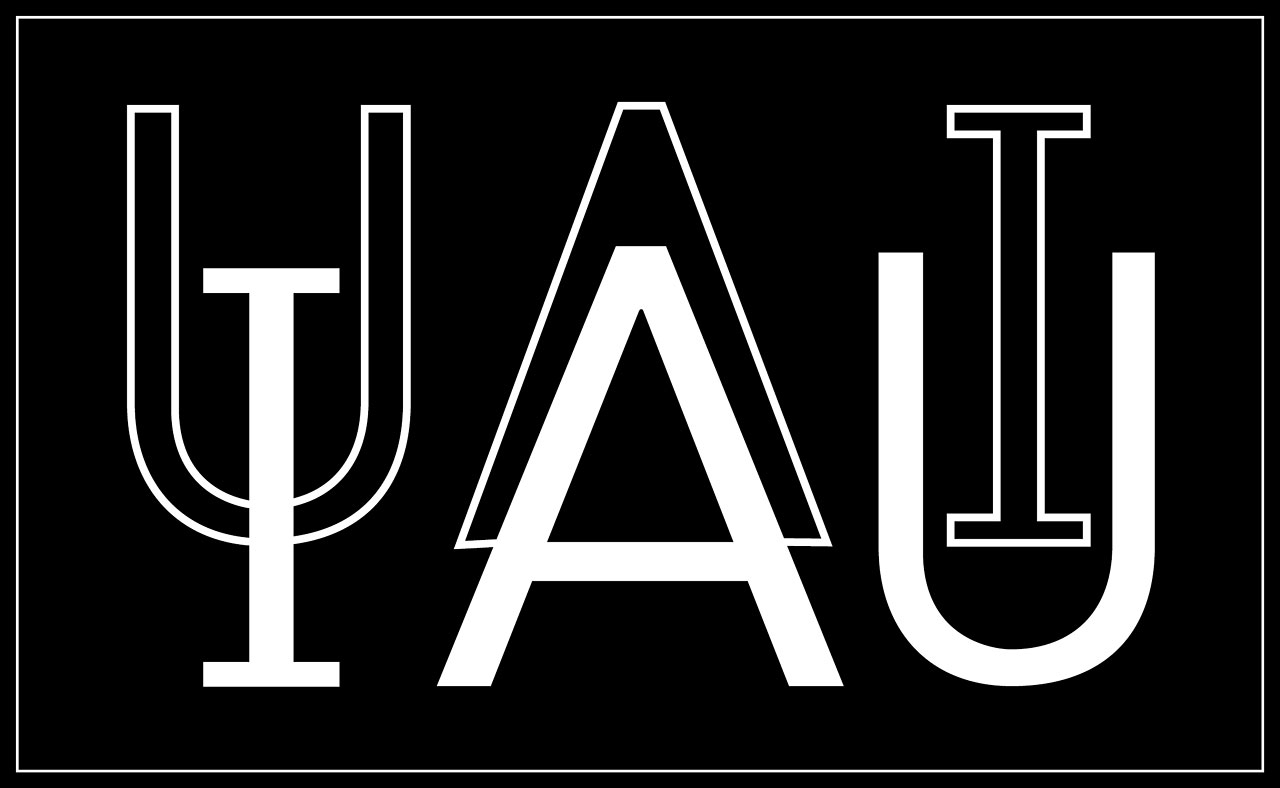
I want to alert all International Astronomical Union (IAU) members to the re-organization of the IAU Commissions that is now underway.
The current Commission 40 (Radio Astronomy) has been one of the largest and most active commissions in the IAU. In addition to vigorous scientific programs at the General Assemblies and sponsorship of IAU Symposia, Commission 40 defines the nomenclature and standards used in radio astronomy, and provides a forum for the exchange of ideas that range across all of the scientific fields covered by radio astronomy.
I want to encourage all IAU Members with an interest in radio astronomy to vote for the continuation of the Radio Astronomy Commission within IAU Division B. Each IAU member should have received an email from IAU General Secretary, Thierry Montmerle, on or about 5 November with instructions and a member-specific code that will enable your vote.
Note that the voting deadline is 31 December 2014.
NRAO Astronomy Community Days in 2015

In preparation for the upcoming proposal cycles for NRAO facilities – including the Atacama Large Millimeter/submillimeter Array (ALMA), the Jansky Very Large Array (VLA), the Green Bank Telescope (GBT), and the Very Long Baseline Array (VLBA) – we invite the astronomical community to host NRAO Community Day Events (CDEs) in early 2015. The goal of these CDEs is to provide users with the knowledge they need to carry out cutting edge scientific research using NRAO facilities. We are particularly interested in reaching new users, so experience with radio astronomy is not a requirement!
NRAO CDEs are one to two day events designed in cooperation with host institutions across North America. NRAO staff members will travel to the host institutions to provide a series of lectures and tutorials, in addition to describing the latest telescope capabilities and the broad science they enable. These CDEs include hands-on workshops to train scientists in the use of the free software provided for proposal preparation, observation planning, and data reduction for any NRAO instruments. Hosts should expect to attract 30 or more participants, and scientists at any stage of their graduate or professional careers are welcome.
The agenda for each CDE will be largely driven by the goals of the host institution and the expected participants. We hope to emphasize the synergies amongst telescope facilities large and small across the entire wavelength range, and to demonstrate the innovative science that can now be done with world class radio telescopes to complement and complete projects originally undertaken in optical, IR and even x-ray bands. Prior experience in radio/mm/submm observing is not required, and requests by multi-wavelength and cross-disciplinary audiences are highly encouraged. The NRAO will also support CDEs for communities with more experience in radio astronomy and those that are already familiar with NRAO facilities. CDEs for advanced users may include tutorials on using the most recent versions of proposal preparation tools and data reduction software. These events are expected to have at least 15 participants, and may span one or two days depending on the number of facilities and tutorials to be covered.
The proposal deadline for ALMA Cycle 3 will be in late April, and for the GBT, VLA and VLBA, the 2015 proposals deadlines will be Feb 2 and Aug 3. Persons interested in organizing and hosting a CDE at their institution can apply online here. The application should include a description of the primary goals of the CDE (e.g. learning about NRAO telescopes/science, CASA tutorial), the number of people expected to attend (including participants from the host institution and from nearby communities), the requested duration of the CDE, and which NRAO facilities are of most interest to the expected participants. The host institutions should plan to provide the local workshop space (a meeting room with tables or desks, high-speed internet, projector) and work together with NRAO staff to construct a program and broadly advertise the CDE. Applications for hosting a CDE may be submitted until Feb 15, 2015.
Telescope Time Allocation for Semester 2015A

The Observatory has completed the Semester 2015A time allocation process for the Very Large Array (VLA) , the Very Long Baseline Array (VLBA) / High Sensitivity Array (HSA) , and the Green Bank Telescope (GBT). A total of 375 new proposals were received for the 1 August 2014 submission deadline and a total of 1432 unique authors submitted proposals to the Observatory, with 1051, 358, and 258 proposers competing for time on the VLA, GBT, and VLBA/HSA, respectively. In aggregate the proposals covered the broad spectrum of modern research in astronomy and astrophysics.
The proposals were reviewed for scientific merit by eight Science Review Panels (SRPs). The proposals were also reviewed for technical feasibility by NRAO staff. Reviews were completed in September and then cross-reconciled by the Time Allocation Committee (TAC) during a telecon on 9 October and a face-to-face meeting on 21-22 October 2014 at NRAO in Green Bank, WV. The TAC consists of the chairs of the SRPs and was charged with recommending a science program for Semester 2015A to the NRAO Director. The recommended program was reviewed and approved on 5 November 2014.
A disposition letter was sent to the principal investigator and co-investigators of each proposal on 13 November 2014, within the window for funding applications to the US National Science Foundation's Astronomy and Astrophysics Grants program. A TAC report containing information for proposers and observers, including statistics and telescope pressure plots, was released the same day. The Observatory is pleased to highlight the statistics stemming from its new joint opportunities with the Hubble Space Telescope (HST) and Swift missions:
- HST orbits: up to 30 available, 97 requested, 14 approved
- Swift ksecs: up to 300 available, 253.5 requested, 54 approved
The approved science program has been posted to the NRAO science website. For each approved proposal in the science program, the Proposal Finder Tool will have access to its authors, title, abstract, and approved NRAO hours.
The Observatory welcomes community feedback on its process for telescope time allocation. Please provide such feedback via the Proposal Review department of the Observatory's Helpdesk.
2015 NRAO Summer Student Research Assistantships Program
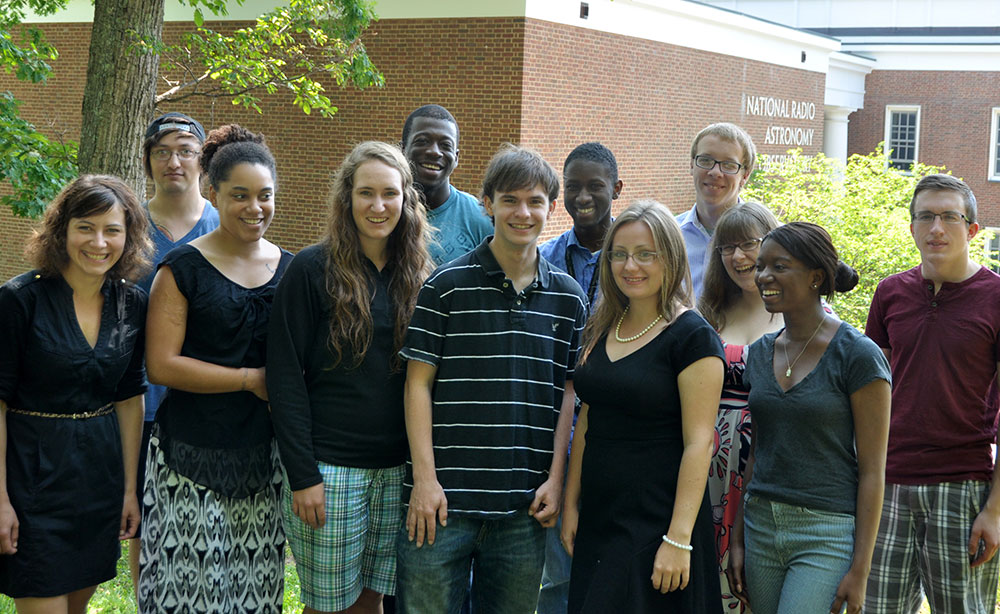
NRAO is now accepting applications for the 2015 NRAO Summer Student Research Assistant programs. Each student conducts research under the supervision of an NRAO staff member at one of the NRAO sites on a project in the supervisor's area of expertise. The project may involve any aspect of astronomy, including original research, instrumentation, telescope design, or astronomical software development. At the end of the summer, students present their research results at a seminar and submit a written report. These projects may result in publications in scientific journals.
In addition to their research, students take part in other activities, including social events, excursions, professional development workshops and an extensive lecture series that covers many aspects of radio astronomy and astronomical research. Students also collaborate on their own observational projects using the Jansky Very Large Array, Very Long Baseline Array, and/or Green Bank Telescope.
Students are encouraged to review the NRAO staff web pages to learn more about the types of research being conducted at the NRAO. On their application, students have the option of requesting to work with a specific staff member, on a specific scientific topic, at a specific site, or to be considered for a specific program. The site to which a summer student is assigned depends on the location of the NRAO supervisor who chooses them. Examples of past summer student research projects can be found on-line at the NRAO Summer Student website.
There are three types of Summer Student programs available at the NRAO. The Research Experiences for Undergraduates (REU) program is for undergraduates who are citizens or permanent residents of the United States or its possessions, and is funded by the National Science Foundation (NSF) REU program. The NRAO Undergraduate Summer Student Research Assistantship program is for students who are U.S. citizens or are otherwise eligible to work in the U.S. This program supports a broad range of students and research projects, some of which may not meet the REU guidelines, such as graduating college seniors, some foreign undergraduate students, or projects involving pure engineering or computer programming. The NRAO Graduate Summer Student Research Assistantship program is for graduate students who are eligible to work in the U.S and are enrolled in an accredited U.S. Graduate Program. These programs are funded in part by Associated Universities, Inc.
The programs run 10-12 weeks each summer, from early June through early August. The stipends for the 2015 Summer Student Program will be $657 per week for undergraduates and graduating seniors, and $703 per week for graduate students. These stipends include an allowance for housing, since housing is not provided. Financial support is available for students to present their summer research at an American Astronomical Society meeting, generally at the winter meeting following their appointment.
We strongly encourage applications from members of underrepresented groups to all of our programs. NRAO has a commitment to providing an inclusive, educational and exciting experience for everyone. All students with an interest in astronomy and a background in physics, astronomy, engineering, computer science, and/or math are eligible. The same online application form and process is used for all summer programs. Required application materials include an on-line application form (including a statement of interest), transcripts, and three letters of recommendation. The deadline for receipt of all application materials is Monday, 2 February 2015.
AAS Poster Presentations by NRAO 2014 Summer Students
| Monday, 5 January 2015 |
|
137.11. Direct Wind Measurements in Io’s Atmosphere |
|
137.24. Photonic Local Oscillator Test System for the Atacama Large Millimeter/submillimeter Array |
|
140.01. Multi-epoch, Ultraviolet Spectroscopy of Type Ia Supernovae |
|
141.12. Chemical Complexity in the Shocked Outflow L1157 Revealed by CARMA |
|
141.27. Tracing the Dense Molecular Gas in the Large Magellanic Cloud |
|
142.01. The Discovery of New Ammonia Masers in the Galactic Center |
|
142.02. Location of Deuterated Ammonia in Sagittarius B2 |
|
142.03. Targeted VLA Observations of 22 GHz Water Masers Towards the Galactic Center |
|
142.05. Densities of Galactic Center Clouds |
|
143.23. A General Purpose Stacking Technique to Analyze Low Brightness Signal |
|
143.40. Spectral Indices of Faint Radio Sources |
|
143.46. Host galaxies of submicro-Jansky radio sources |
| Tuesday, 6 January 2015 |
|
248.15. Metallicities of Low Mass Inefficient Star Forming Dwarfs in S4G: Testing the Closed Box Paradigm |
|
250.22. Mapping the Star Formation in NGC 1097 Using the JVLA |
|
250.25. An Unusual DRAGN: The Spiral Galaxy, 0313-192 |
|
251.04. The Uses of Fine Structure Lines in Constraining the Physical Properties of a Starburst |
|
256.06. 6.7 GHz Methanol Masers Associated with Jets in Very Early High Mass Protostars |
|
256.07. Ammonia and HC7N Emission in Starless Dense Cores |
| Wednesday, 7 January 2015 |
|
336.28. An Analysis of Offset, Gain, and Phase Corrections in Analog to Digital Converters |
|
336.30. A Blind Search for Neutral Hydrogen |
|
336.34. A Pipeline for High Resolution Radio Images |
|
337.15. Systematic and Performance Tests of the Hard X-ray Polarimeter X-Calibur |
|
346.12 On the Sensitivity of Black Widow Pulsars to the Stochastic Gravitational Wave Background |
|
347.07. Constraining the Orbits of the Supermassive Binary Blackhole Pair 0402+379 |
| Thursday, 8 January 2015 |
|
[Session TBD] A Green Bank Telescope 21cm survey of HI clouds in the Milky Way's |
ALMA Project Status
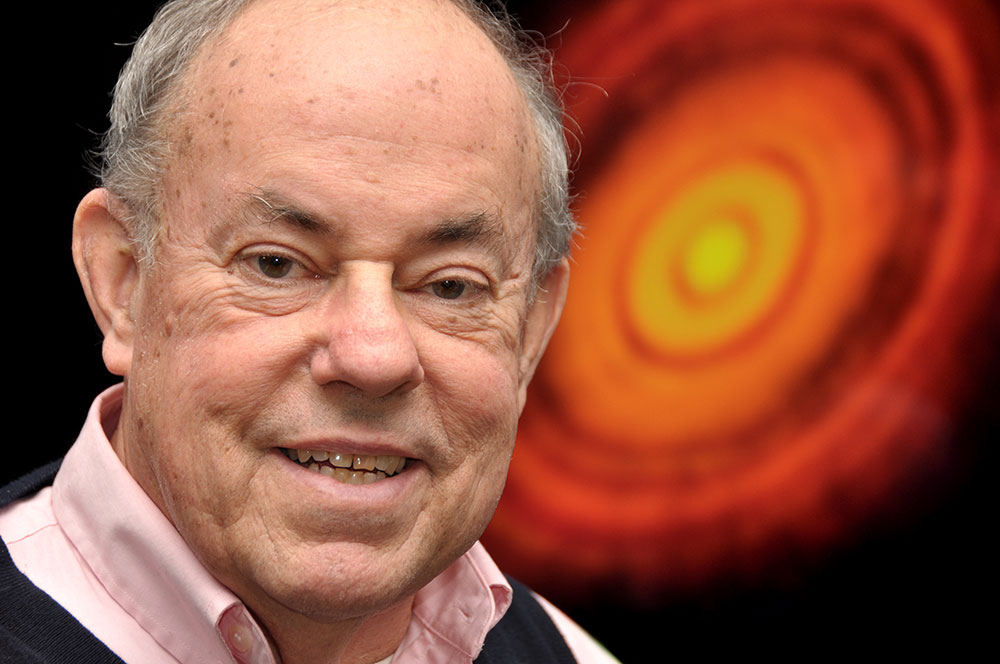
Jeff Hellerman
Al Wootten and ALMA HL Tau image
[click to enlarge]
ALMA has been in an extended configuration since September, including baselines as long as 15.2 km, as part of a campaign to develop strategies for executing user observations using the array’s full extent. The array will be moved into a compact configuration for the resumption of Early Science during the first week of December. This Early Science session will continue through January. Engineering and software activities will proceed from then into March during the austral summer, during which observing conditions are generally inferior. Early Science will then resume and continue through the remainder of Cycle 2.
A spectacular image of the protoplanetary disk around the young star HL Tauri was featured in a media release published on 6 November. The image, made at 1.3 mm wavelength, included several datasets incorporating 25 to 30 antennas deployed on baselines ranging from 15 m to 15.2 km. This provided a beam size of 35 milliarcseconds, or 5 AU at the 130 pc distance to the star. The total integration time on the source was 4.5 hours. The image gained widespread notice in the international media. These and other data obtained during the long baseline campaign will be discussed at the conference Revolution in Astronomy with ALMA – The Third Year to be held 8-11 December at the Tokyo International Forum in Tokyo, Japan. These data will be made public in late January or early February as ALMA Science Verification data, along with guides demonstrating how they were imaged.
Data collected during Early Science prior to the long-baseline campaign are being processed through the ALMA calibration pipeline at the Joint ALMA Observatory (JAO) in Chile and imaged at the ALMA Regional Centers in North America, Europe, and East Asia, for delivery to PIs. Further information on this process is available at the ALMA Science Portal.
Final Acceptance of the ALMA Total Power capability has been achieved. Accepted Cycle 1 and 2 Total Power observing programs may now be included in the Early Science observing cadence. Assessment of the maturity of capabilities to be offered for Cycle 3 is reaching conclusion and has been discussed as an ALMA Science Portal news item. The Cycle 3 capabilities will be decided at the conclusion of the Extension of Capabilities campaigns and announced via the ALMA Science Portal in early December. This Cycle 3 pre-announcement will also include the dates for the Cycle 3 Call for Proposals and proposal deadline. ALMA Cycle 3 proposals will be scheduled for an observing season that starts in October 2015.
A joint ESO/ESA/ALMA/NRAO-NAASC workshop, Ground and Space Observatories: A Joint Venture to Planetary Science, will be held 2-5 March 2015 in Santiago, Chile. The goal of this workshop is to explore synergies between ground and space-based observatories with planetary missions for exploring the Solar System and planets, and to foster collaborations between the different communities by sharing scientific and technical knowledge, needs, requirements, and techniques. See the workshop website for additional information.
ALMA Memo 599 – The ALMA Calibrator Database I: Measurements taken during the commissioning phase of ALMA – by T.A. Van Kempen et al. has been published and is available on-line.
ALMA Detections of Disks Around Brown Dwarfs
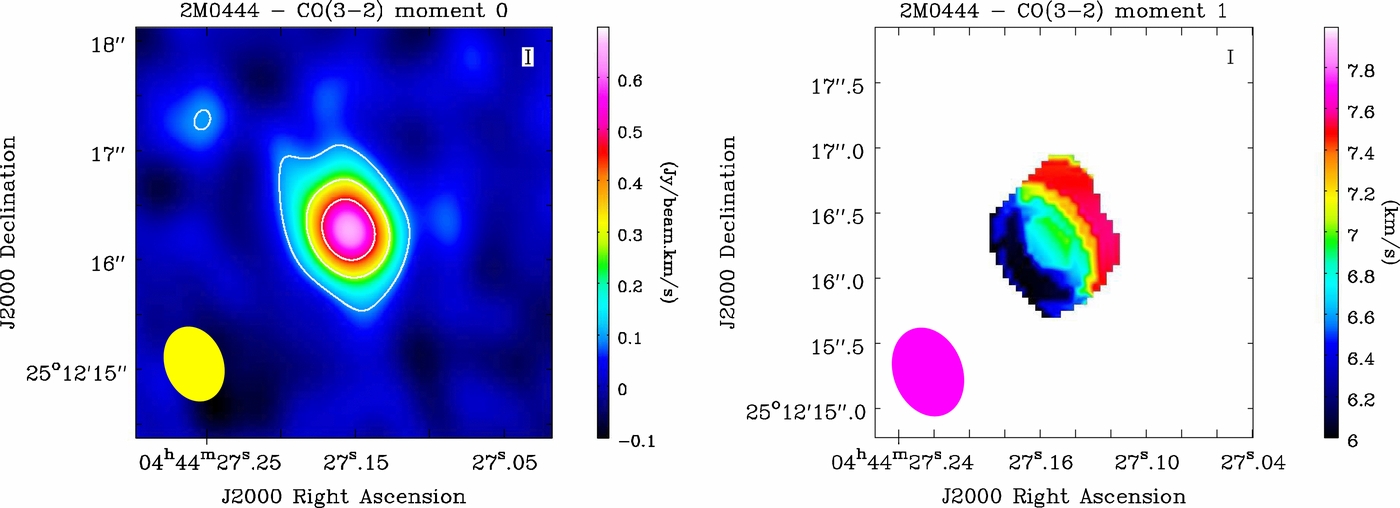
ALMA maps of CO(J = 3–2) from 2M0444 in Band 7. Left: moment 0 map. Contours are at 3, 9, 15σ. Right: moment 1 map. Only pixels greater than ~5σ were used for the map. In both panels, the ellipse in the lower left corner is the synthesized beam.
[click to enlarge]
One of the key science goals driving the ALMA technical specifications is the ability to resolve disks around young stars, and to ultimately resolve disk substructure. In dense stellar environments, the extent, structure, and mass of these disks can shred light on the formation of stellar and planetary systems and the amount of material available for forming planets.
In a recent study published in the Astrophysical Journal, L. Ricci (Caltech) and his collaborators present 0.89 and 3.2 mm ALMA observations of disks around three young brown dwarfs and very low-mass stars in the Taurus star-forming region. At these frequencies, the observations are sensitive to the majority of the dust that resides in the colder, outer disk regions. All three objects are detected in dust continuum, and two are detected in CO(3-2) emission.
The visibility amplitudes for the 0.89 mm continuum observations are used to derive disk diameters of greater than 56 AU, which, along with the derived radial profile and dust surface density, and disk-to-central core mass ratios, are within the range observed for disks around more massive young stars. The derived dust opacities are consistent with millimeter or larger size grains also inferred to reside around young, more massive stars. These properties as a whole favor the formation of these low-mass systems from a normal stellar-like, dense central core gravitational collapse over models where the ejection of the forming brown dwarf by interactions within dense stellar clusters can stunt its growth and the growth of the surrounding disk.
NRAO 2013 Annual Report
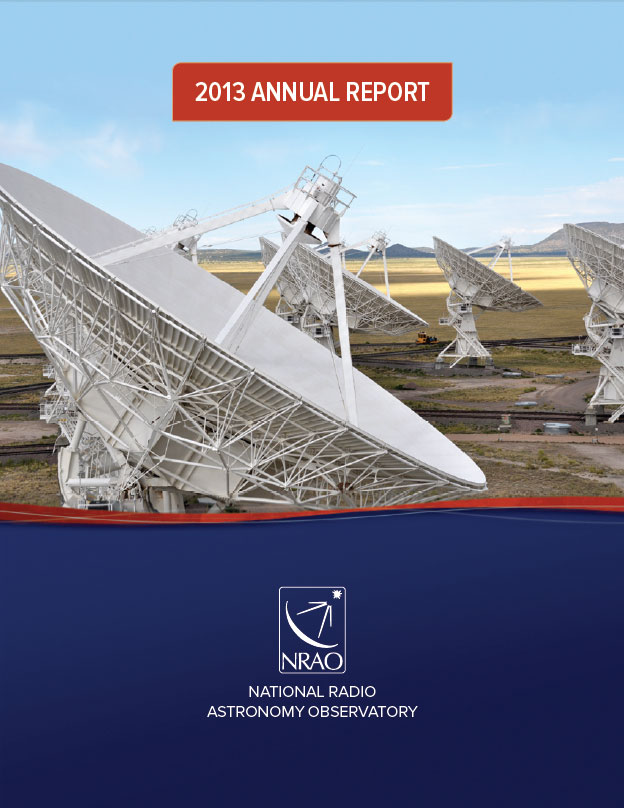
The NRAO Annual Report for calendar year 2013 describes the year’s science highlights and summarizes the numerous science, development, operations, and construction activities that were conducted across the Observatory from 1 January – 31 December 2013. The 2013 NRAO Annual Report can be accessed as a pdf download or for on-line viewing.
NRAO Participates in Inaugural FLC Virtual Forum
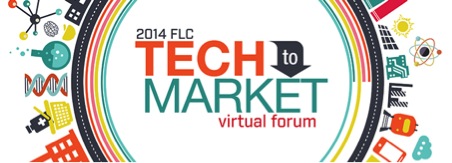
The Federal Labs Consortium (FLC) held its first ever FLCVirtual Forum on 5-6 November 2014. Two newly patented NRAO technologies were highlighted during the virtual web-based meeting. The purpose of the event was to accelerate federally-funded technologies being licensed and adopted by businesses in the commercial marketplace. The FLC is a federally-funded organization that promotes licensing, joint research, and commercialization of federally-funded technologies, and is an area of agreement between both major political parties in U.S. Congress.
The two NRAO technologies highlighted at the forum received their U.S. Patents in April and July 2014. The first patent was for a technology which allows for the transmission of unformatted data over fiber optic lines and is managed from the receive end without the need for microprocessors and complex logic. The second patent was for a technology that creates variable, almost limitless frequency spacing in a frequency generator, overcoming the obstacle of fixed steppings or comb lines. Both technologies are available for licensing and joint development from the NRAO Technology Transfer website.
The FLC is designed to facilitate technology transfer and technology partnerships between federally-funded laboratories/institutions and commercial industry. The Obama Administration published a memorandum in 2011 to accelerate such tech transfer activities out of all federally-funded laboratories and in response to this memorandum the FLC has created a marketplace for this activity, known as FLCBusiness. The FLCBusiness website is a tool for commercial industry to find and engage in partnerships with federally-funded laboratories, which includes intellectual property licensing, sponsored research, joint technology development partnerships, collaboration partnerships and commercialization activities.
The FLC plans to make the FLCVirtual Forum an annual event in November, with NRAO technologies being highlighted for commercialization.
Recent Media Releases
Career Opportunities
New Postings
Scientist (Assistant/Associate): The NRAO in Charlottesville, VA is now accepting applications for a Scientist position. The staff scientists recruited for these positions are expected to facilitate and enable cutting-edge science by community members and work to enhance the observing capabilities for ALMA. The ideal candidates will contribute to the overall NRAO mission and must be able to demonstrate success working within a collaborative environment that promotes motivation, leadership, and team building.
Astronomer (Tenure Track): The NRAO in Charlottesville, VA is now accepting applications for an Astronomer position. NRAO is recruiting for a tenure-track scientific staff position (Astronomer track) affiliated with the North American ALMA Science Center (NAASC). The NAASC is the science operations division of North American ALMA. The successful candidate shall have demonstrated excellence in research and research leadership, and demonstrated the ability to provide vision and leadership for development of new ALMA and NRAO concepts, enhancements, and next-generation directions.
Software Engineer: The NRAO in Green Bank, WV is now accepting applications for a Software Engineer position. The candidate will use prescribed methods, research, and conduct and/or coordinate detailed phases of software engineering work as assigned. The candidate will perform work that involves conventional software engineering practices.
Maintenance Electrician: The NRAO in Green Bank, WV is now accepting applications for a Maintenance Electrician. The successful candidate will maintain the electrical systems and equipment on the telescopes and site facilities so that they operate safely and correctly.
JAO Observatory Scientist: The Joint ALMA Observatory (JAO) is seeking an Observatory Scientist with extensive experience for coordinating and organizing scientific activities at the ALMA radio astronomy observatory in Chile. The Observatory Scientist is an international, key management position within the Joint ALMA Observatory and she/he will report to the ALMA Director. The Observatory Scientist will provide ongoing scientific leadership for astronomy staff, and continue to lead the efforts to maximizing the scientific performance and impact of the array through continued improvement including but not limited to the development program. The staff of the Joint ALMA Observatory is composed of both international and local (Chilean) staff members. There are presently more than 20 nationalities originating from six continents represented in ALMA. Local and international staff have duty stations at one of two sites, the Santiago office in Vitacura and the Operations Support Facility (OSF) near San Pedro de Atacama in northern Chile. The actual contractual terms will be defined by the selected employer (ESO, AUI/NRAO or NAOJ).
Software Build and Test Engineer: The NRAO is now accepting applications for a Software Build and Test Engineer. This position may be located in Socorro, NM or Charlottesville, VA. The Software Engineer will be a member of the Common Astronomy Software Applications (CASA) development team. The new team member will primarily be responsible for CASA builds, build support and release packaging. As part of these duties, the Software Engineer will participate in extending the current build system (currently based on Cmake) and the existing automated test system (currently based on Jenkins and Robot Framework).
From the Archives
Ellen Bouton

[click to enlarge]
About this month's photograph: On 2 December 1964, excavation began for the new NRAO building on the University of Virginia grounds in Charlottesville, and on 20 December 1965 NRAO took occupancy. By the end of January 1966, the Director's office, the library, and a portion of the scientific staff had transferred from Green Bank to Charlottesville. Then NRAO Director, David Heeschen said the decision to move to Charlottesville was one of the most difficult and contentious of his tenure as Director (Hear his discussion of the move in a 2011 interview). This cartoon by Marja Baars appeared on page 14 of the December 1965 Observer and expresses the mixed feelings everyone had about the change.
From the Archives is an ongoing series illustrating NRAO and U.S. radio astronomy history via images selected from our collections of individuals' and institutional papers. If readers have images they believe would be of interest to the Archives, please contact Ellen Bouton, archivist@nrao.edu.

